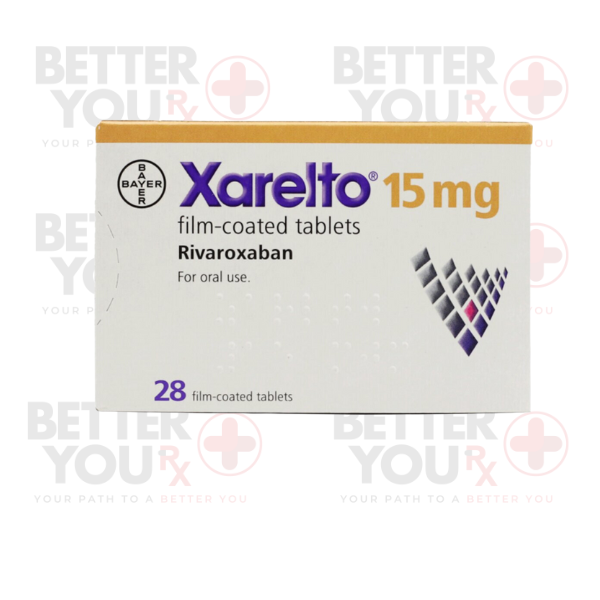SAVE 10% OFF First Order With Coupon Code: happyhealth
Description
Fulvestrant is a prescription medication primarily used to treat certain types of breast cancer in postmenopausal women, particularly hormone receptor-positive (HR+) advanced or metastatic breast cancer. This injectable treatment is classified as an estrogen receptor antagonist, which means it blocks the effects of estrogen in breast tissue. Estrogen can promote the growth of cancer cells in HR+ breast cancer, so Fulvestrant’s mechanism helps slow or halt the progression of these cancer cells.
Administered as an injection, Fulvestrant binds to estrogen receptors and promotes their degradation, reducing the number of receptors available for estrogen to act upon. This dual action helps to reduce estrogen’s influence on cancer cell growth and proliferation, making it an effective therapy for patients whose cancer has progressed after other hormone therapies.
Uses of Fulvestrant
- Hormone Receptor-Positive Breast Cancer Treatment: Used in postmenopausal women with HR+ advanced breast cancer, Fulvestrant targets estrogen receptors to help manage the disease.
- Second-Line Therapy: Often prescribed when other hormone therapies, such as tamoxifen or aromatase inhibitors, are no longer effective, offering another option for ongoing cancer management.
Benefits of Fulvestrant
- Reduces Cancer Cell Growth: By blocking estrogen receptors and facilitating their breakdown, Fulvestrant slows cancer cell growth, helping patients manage their cancer progression more effectively.
- Alternative for Resistant Cases: Provides an option for women whose cancer no longer responds to other forms of hormonal treatment, supporting a more personalized approach to cancer therapy.
- Minimal Interference with Other Treatments: Generally well-tolerated, Fulvestrant can be used alone or alongside other medications like CDK4/6 inhibitors for a combination approach, depending on individual treatment needs.
Side Effects of Fulvestrant
While many patients tolerate Fulvestrant well, some may experience side effects, including:
- Injection site pain
- Nausea
- Fatigue
- Hot flashes
- Joint or muscle pain
- Headache
- Constipation
More serious side effects, though rare, may include liver function changes and blood clot risks. Patients should monitor their health and report any unusual symptoms to their healthcare provider.
How to Use Fulvestrant
Fulvestrant is administered as an intramuscular injection, usually in a healthcare setting. The typical dosing schedule begins with two initial doses two weeks apart, followed by monthly maintenance injections. Dosage may vary based on a patient’s specific health condition, so it is important to follow your healthcare provider’s instructions closely.
How Fulvestrant Works
Fulvestrant’s mechanism involves blocking estrogen’s interaction with its receptors in breast tissue. By binding to and promoting the degradation of these receptors, Fulvestrant effectively reduces estrogen’s role in cancer cell growth. This approach provides a targeted way to slow down cancer progression in patients with HR+ breast cancer.
Safety Advice and Precautions
- Liver Function: Regular liver function tests may be needed as Fulvestrant can affect liver enzymes. Your doctor will monitor these levels and may adjust treatment if necessary.
- Pregnancy and Breastfeeding: Fulvestrant is not recommended for pregnant or breastfeeding women. Women of childbearing potential should use effective contraception during treatment.
- Blood Clotting Risks: Some patients may be at a higher risk for blood clots; therefore, discussing any history of clotting disorders with your doctor before starting treatment is essential.
What if You Miss a Dose?
As Fulvestrant is typically administered by healthcare professionals, a missed dose should be rescheduled as soon as possible. Contact your healthcare provider if you cannot attend a scheduled appointment.
Overdosing
An overdose of Fulvestrant is rare as it is administered in a controlled setting by healthcare providers. However, report any unexpected symptoms to a healthcare professional if you have concerns.
How to Store Fulvestrant
Since Fulvestrant is administered in a clinical setting, storage guidelines are managed by healthcare providers. However, it should be kept at controlled room temperature if stored temporarily before administration.
FAQs About Fulvestrant
- Can Fulvestrant be combined with other cancer treatments? Yes, Fulvestrant is often combined with medications like CDK4/6 inhibitors to enhance treatment efficacy for some patients.
- How long does treatment with Fulvestrant last? Treatment duration depends on individual patient response and tolerance. Some may require long-term treatment under careful monitoring.
- What should I do if I experience severe side effects? Contact your healthcare provider immediately if you experience any serious side effects, such as signs of liver dysfunction or unusual bleeding.
Order Fulvestrant Affordably Through Better You Rx
Gain reliable access to Fulvestrant through Better You Rx, connecting you with trustworthy Canadian Pharmacy Affiliate partners. Our service offers affordable medications for those managing breast cancer, ensuring timely and consistent treatment options.
Call to Action
Ready to continue your breast cancer management with confidence? Add Fulvestrant to your Better You Rx cart today and take a proactive step towards effective hormone receptor-positive breast cancer care. With our pharmacy affiliate service, you’re assured access to affordable and high-quality medications. Empower your health journey and add Fulvestrant to your cart now.
Disclaimer
This information is provided for educational purposes and is not a substitute for medical advice. Always consult your healthcare provider for guidance specific to your health condition and before starting or stopping any medication.









